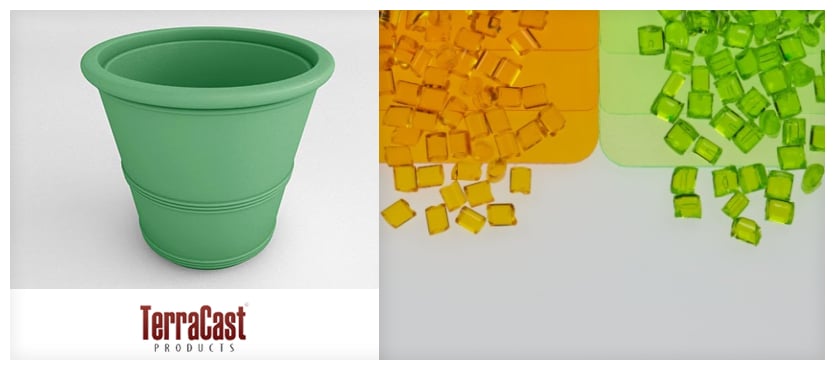Resin, a versatile material widely used in various industries, from construction and furniture to art and jewelry, plays a crucial role in modern manufacturing. This article delves into the composition of resin and the intricate process of making it, providing a comprehensive understanding of this essential material.
What is Resin Made Of?
Resin is a broad term used to describe a wide range of synthetic and natural compounds that can be molded into different shapes and forms. The most common types of resin used in industrial applications are synthetic resins, primarily made from petrochemicals. Here, we focus on synthetic resins, particularly those used in manufacturing products like planters, furniture, and light pole bases.
Basic Components of Synthetic Resin
- Monomers: The fundamental building blocks of resin are monomers, small molecules that can join together to form long chains. Common monomers include ethylene, propylene, and vinyl chloride.
- Additives: To enhance the properties of resin, various additives are incorporated during the manufacturing process. These may include:
- Stabilizers: To protect the resin from degradation caused by UV radiation and heat.
- Plasticizers: To increase the flexibility and pliability of the resin.
- Fillers: To add strength and reduce production costs.
- Pigments: To provide color and improve aesthetic appeal.
Types of Resin
Several types of synthetic resins are commonly used, each with distinct properties and applications:
- Polyester Resin: Widely used in fiberglass, boat hulls, and car bodies.
- Epoxy Resin: Known for its excellent adhesive properties and used in coatings, adhesives, and composite materials.
- Polyurethane Resin: Flexible and used in foam products, coatings, and elastomers.
- Acrylic Resin: Used in paints, coatings, and as a casting material.
- Polyethylene (PE) and Polypropylene (PP) Resins: Used in everyday products like containers, bottles, and packaging materials.
The Process of Making Resin
The manufacturing process of synthetic resin involves several key steps, from raw material extraction to polymerization and final product formation.
1. Extraction of Raw Materials
The primary raw materials for synthetic resin production are derived from petrochemicals. Crude oil and natural gas are processed in refineries to extract essential hydrocarbons like ethylene, propylene, and benzene. These hydrocarbons serve as the monomers for resin production.
2. Polymerization
Polymerization is the chemical process where monomers are chemically bonded to form long polymer chains. This process can occur through different methods:
a. Addition Polymerization
In addition polymerization, monomers add to each other without the loss of any molecule. This method is commonly used to produce polyethylene, polypropylene, and polystyrene. The process involves three stages:
- Initiation: A catalyst initiates the reaction, causing the monomers to become reactive.
- Propagation: Reactive monomers continuously add to the growing polymer chain.
- Termination: The reaction stops when the monomer supply is exhausted or an inhibitor is introduced.
b. Condensation Polymerization
In condensation polymerization, monomers react to form a polymer and release a small molecule, usually water. This method is used to produce polyesters, polyamides, and polyurethanes. The process involves:
- Step-Growth Polymerization: Monomers react with each other in a stepwise manner, forming dimers, trimers, and eventually long polymer chains.
- By-product Removal: The small molecules formed during the reaction are continuously removed to drive the polymerization forward.
3. Mixing and Compounding
After polymerization, the raw polymer is mixed with various additives to enhance its properties. This process, known as compounding, involves blending the polymer with stabilizers, plasticizers, fillers, and pigments. The mixture is thoroughly homogenized to ensure uniform distribution of additives.
4. Forming and Shaping
The compounded resin is then shaped into the desired form through various molding and extrusion techniques. Common methods include:
a. Injection Molding
In injection molding, the resin is heated until it becomes molten and then injected into a mold under high pressure. This method is ideal for producing complex shapes with high precision, such as automotive parts, consumer goods, and medical devices.
b. Extrusion
In extrusion, the molten resin is forced through a die to create long continuous shapes like pipes, sheets, and films. This method is widely used in packaging, construction, and textile industries.
c. Blow Molding
Blow molding is used to create hollow objects like bottles and containers. The molten resin is extruded into a tube, which is then inflated into a mold to form the final shape.
d. Rotational Molding
Rotational molding involves placing the resin powder in a mold that is heated and rotated along two axes. The resin melts and coats the interior of the mold, forming a hollow object. This method is ideal for producing large, hollow items like tanks, playground equipment, and outdoor furniture.
5. Cooling and Solidification
After shaping, the resin products are cooled to solidify their form. This step may involve air cooling, water baths, or refrigerated chambers, depending on the specific requirements of the product.
6. Finishing and Quality Control
The final step in the resin manufacturing process involves finishing and quality control. Products are trimmed, polished, and inspected for defects to ensure they meet the required specifications and standards. Quality control measures may include visual inspection, mechanical testing, and chemical analysis.
Quality and Innovation
Resin, with its diverse types and versatile properties, plays a crucial role in various industries. Understanding its composition and the manufacturing process reveals the complexity and precision involved in creating this essential material. From extraction and polymerization to forming and finishing, each step is meticulously designed to produce high-quality resin products. TerraCast® offers a wide range of resin products that exemplify these qualities, making them ideal for numerous applications in urban landscaping and beyond. By choosing TerraCast® products, you can be assured of durability, innovation, and environmental responsibility in your projects. Contact us today for more information.

